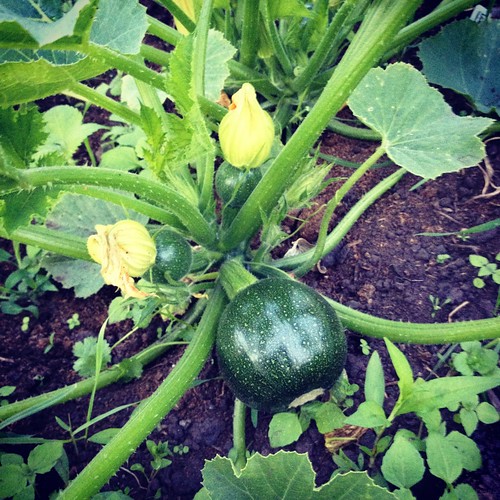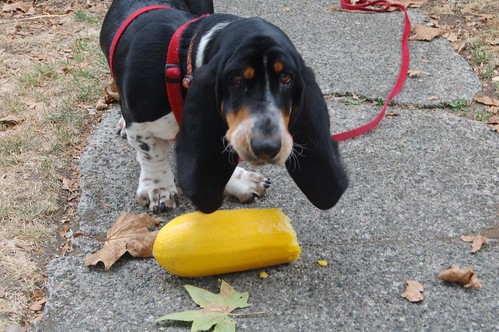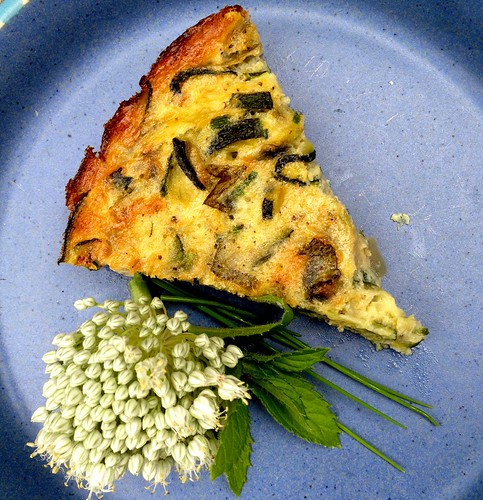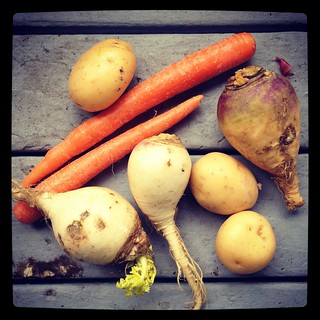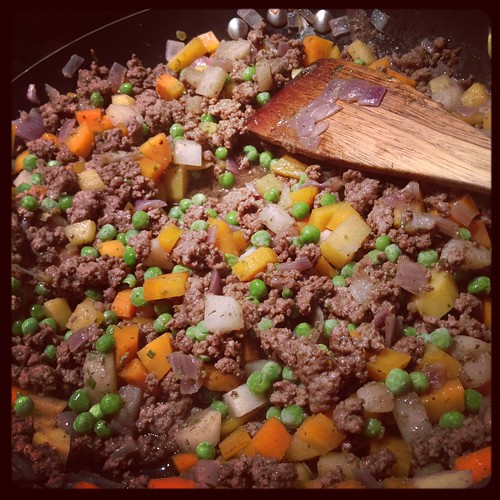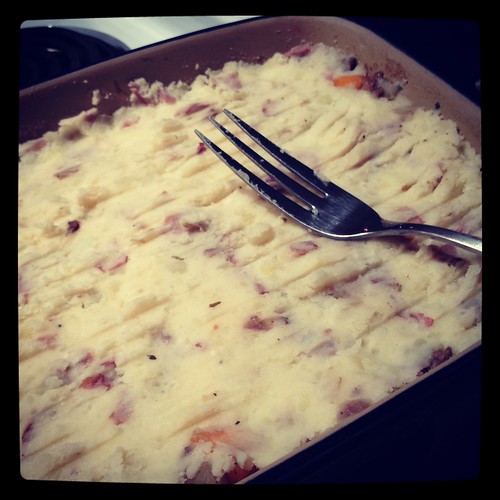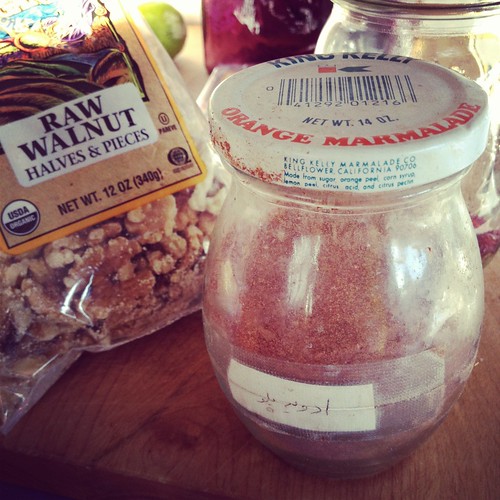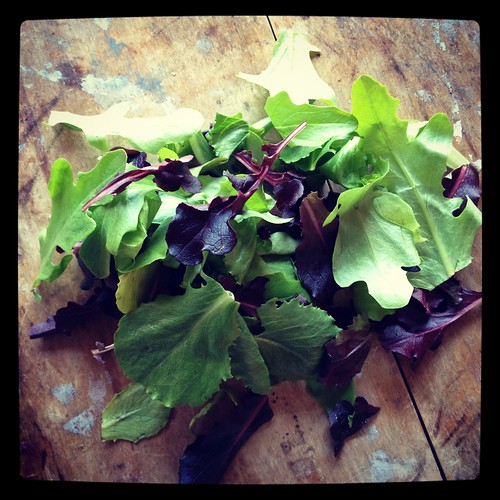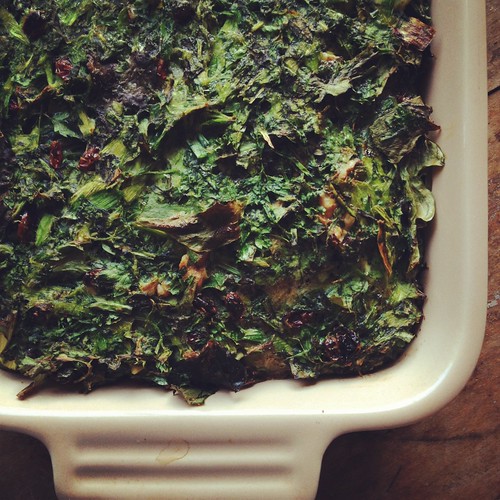Four alliums and a zucchini frittata - kuku kadu
 Sunday, July 15, 2012 at 9:30PM
Sunday, July 15, 2012 at 9:30PM
Our squash are starting to go gang busters. We have planted a bunch of different varieties this year and I am excited to try them all out. We have tried to pick varieties that have smaller compact forms that should hopefully be easier to pick. How I wish squash leaves were transparent, so I wouldn't miss the one that got away. You know that one.
There are an infinite number of ways to use summer squash. I am a big fan of tossing julienned squash with lemon, olive oil and herbs and calling it salad. I love a good chocolate and zucchini cake and some traditionalists actually eat it steamed with a bit of butter. Suffice it to say, by August 15th, we'll have found a few new recipes to file under "summer squash glut".
One recipe that I am sure we'll try is zucchini frittata. I do love a good frittata - farm eggs, sautéd veggies and just the right amount of cheese to hold it all together. Frittatas are great for brunch and cold. They work well in the summer when you can't think of what to cook, easy peasy on the stove top or in the oven.
Persians are master frittata makers, but we call them kukus. My favorites are the sabzi kuku and the potato kuku. The zucchini kuku is a new one for me. I figured I would try it with some of the squash we had laying about. The original recipe called for a lot of butter and onions, one thing I was trying to avoid and the other I just didn't have on hand. I made a few changes to the recipes I had researched and I think I came up with a pretty good rendition.
I ended up using four different kinds of alliums in my recipe. In part because I had one onion in the house, but plenty of shallots, garlic and chives on hand and was not up for a grocery store encounter. If I had leeks, I would have used them too. The goal of this recipe is to cook the onions and zucchini together until they are a lovely melty mess. Then the mixture is mashed up using a fork or potato masher, cooked a bit longer to draw out the liquid, cooled and mixed with egg and seasonings before baking. I really encourage you to not skip the second cooking or you will have a soggy kuku, which is not very appealing.
The resulting kuku should be browned along the edges, have a little lift from the leavening and taste of lovely mixture of squash and alliums with a hint of herbs you might want to throw in. It will be great hot out of the oven or served at room temperature with a salad and a nice loaf of bread.
Zucchini Frittata - Kuku Kadu
Makes one 9" pie plate kuku that serves 6 as a side dish
Note: I use the term summer squash and zucchini interchangeably, as in my opinion, they are pretty much the same thing in terms of use in the kitchen.
1 lb summer squash, washed, sliced thinly
1 large onion, sliced thinly
3-4 eggs (depending on the size)
2 large shallots, sliced thinly
2 cloves garlic, minced
5 TB butter
2 T flour, I used rice flour
1 T fresh chives, minced
1 T fresh mint, chopped
1 t baking powder
1 t salt
1/2 t freshly ground pepper
Preheat oven to 350 F. Butter pie plate. Place 4 T of butter in frying pan, add onions, shallots, garlic and sauté for 5 minutes. Add squash to mixture and continue to sauté until soft. This should take about 15 minutes under medium to high heat. When softened, remove from heat and use potato masher or fork to mash mixture. It should resemble guacamole. It should be pretty wet at this point. Return to medium heat for 5 minutes to evaporate off some of the liquid. Remove from heat again, let cool and mix in flour, baking powder, salt and pepper and mint. Let cool.
In a separate bowl, whip eggs until well mixed. Add zucchini mixture to egg mixture and stir until well combined. Pour into prepared pie place. Bake for 20 minutes. After 20 minutes, place dollops of remaining butter onto top of kuku. Cook for another 15 minutes, until browned and knife placed in middle comes clean.
Remove from oven, let cool and slice into wedges to serve.
 alliums,
alliums,  brunch,
brunch,  dinner,
dinner,  egg dishes,
egg dishes,  frittata,
frittata,  gluten free,
gluten free,  herbs,
herbs,  squash,
squash,  summer,
summer,  summer squash,
summer squash,  vegetarian,
vegetarian,  zucchini in
zucchini in  recipes,
recipes,  seattle
seattle 





